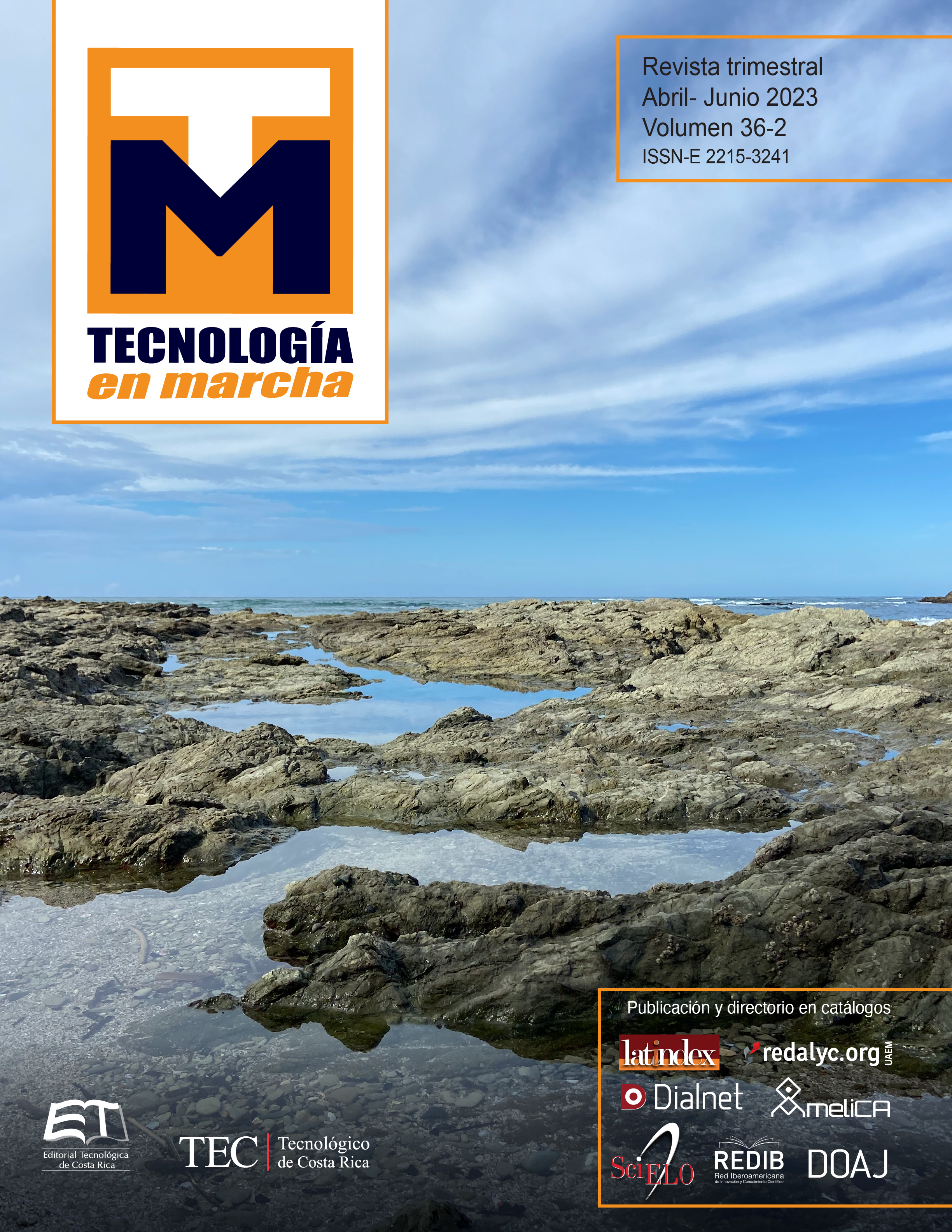Coagulation of wastewater using a mixture of Crotalaria longirostrata powder and aluminum sulfate
Main Article Content
Abstract
Natural plant-based coagulants have been used for water treatment since ancient times, and they are friendly with the environment. The objective of this work was to evaluate the turbidity and color removal capacity of a coagulant mixture of Crotaloria longirostrata powder and aluminum sulfate vs aluminum sulfate. The optimal dose of commercial aluminum sulfate (treatments) and the natural coagulant mixtures of C. longirostrata powder and aluminum sulfate were evaluated, that had the highest turbidity and color (independent variable) removal of a domestic wastewater. A PhilesMR brand jar test kit was used to determine optimal coagulant dosages. Turbidity and color were measured with a Lamote brand turbidimeterMR. A simple one-factor completely randomized design was used and an analysis of variance followed by a multiple Tukey test to find statistically significant differences between the different treatments. Mixtures of C. longirostrata powder with aluminum sulfate (75 mg / L of C longirostrata powder + 175 mg / L of sulfate) removed a greater amount of turbidity and color than the optimal dose of aluminum sulfate (250 mg/L) with removals of 83.4% of turbidity and 64.9% of color respectively. The results managed to reduce the use of aluminum sulfate by 30%. The use of C. longirostrata powder as an aid in the removal of turbidity and color does not have toxic effects since it is an edible shrub.
Article Details

This work is licensed under a Creative Commons Attribution-NonCommercial-NoDerivatives 4.0 International License.
Los autores conservan los derechos de autor y ceden a la revista el derecho de la primera publicación y pueda editarlo, reproducirlo, distribuirlo, exhibirlo y comunicarlo en el país y en el extranjero mediante medios impresos y electrónicos. Asimismo, asumen el compromiso sobre cualquier litigio o reclamación relacionada con derechos de propiedad intelectual, exonerando de responsabilidad a la Editorial Tecnológica de Costa Rica. Además, se establece que los autores pueden realizar otros acuerdos contractuales independientes y adicionales para la distribución no exclusiva de la versión del artículo publicado en esta revista (p. ej., incluirlo en un repositorio institucional o publicarlo en un libro) siempre que indiquen claramente que el trabajo se publicó por primera vez en esta revista.
References
R. Olivero Verbel,A. Florez Vergara.,L. Vega Fellizola., & G. Villegas de Aguas.. “Evaluación de una mezcla para coagulantes naturales, Opuntia ficus y Moringa oleifera en clarificación de aguas”. Producción + Limplia, 12(2), 71-79 https://doi.org/10.22507/pml.v12n2a6
A. Nath, A. Mishra and P. P. Pande. “A review natural polymeric coagulants in wastewater treatment, Materials Today: Proceedings” https://doi.org/10.1016/j.matpr.2020.03.551a
D. Choque-Quispe, Y. Choque-Quispe, A. M Solano-Reynoso., & B. S. Ramos-Pacheco. “Capacidad floculante de coagulantes naturales en el tratamiento de agua. Tecnología Química”. 38(2), 298-309. 2018. Recuperado en 31 de octubre de 2021, de http://scielo.sld.cu/scielo.php?script=sci_arttext&pid=S2224-61852018000200008&lng=es&tlng=es.
C. Banchón; R. Baquerizo; D. Muñoz; L. Zambrano. “Coagulación natural para la descontaminación de efluentes industriales”. Enfoque UTE, vol. 7, núm. 4, Octubre-Diciembre, pp. 111-126. 2016. Universidad Tecnológica Equinoccial DOI: https://doi.org/10.29019/enfoqueute.v7n4.118
P. Agarwal, G. Saini. “Use of natural coagulants (Moringa oleifera and Benincasa hispida) for volume reduction of waste drilling slurries.” Materials Today: Proceedings. https://doi.org/10.1016/j.matpr.2020.12.924.2021
M. Carpio, C. Ruiz, D. Esenarro, C. Rodríguez, G. García, J. Breña. “Natural Coagulant Based on Mango Seeds (Mangifera indica L) in Removal of Turbidity of Domestic Wastewater.” International Journal of Advanced Science and Technology. Vol. 29, No. 7 pp. 2726 – 2734. 2020. http://sersc.org/journals/index.php/IJAST/article/view/18144/9197
B.I. Gandiwa, L.B. Moyo, S. Ncube, T.A. Mamvura, L.L. Mguni, N. Hlabangana. “Optimisation of using a blend of plant based natural and synthetic coagulants for water treatment: (Moringa Oleifera-Cactus Opuntia-alum blend).” South African Journal of Chemical Engineering. Vol. 34 pp. 158–164. 2020. https://doi.org/10.1016/j.sajce.2020.07.005
K. S. Lim, V. Sethu, A. Selvarajoo. “Natural plant materials as coagulant and flocculants for the treatment of palm oil mill effluent.” Materials Today: Proceedings. 2021. https://doi.org/10.1016/j.matpr.2021.02.483.
Y. Fernández-Gutiérrez, C. Ruiz-Huamán. “Tratamiento de agua residual mediante aplicación de sultafo de aluminio y biopolímero natural de tamarindo (Tamarindus indica).” Revista de Investigación: Ciencia, Tecnología y Desarrollo. Vol 6 No. 2 pp: 28-34. 2020. https://revistas.upeu.edu.pe/index.php/ri_ctd/index ISSN 2410-843x (en línea)
J. P. Laguna González, “Determinación de la actividad biológica y caracterización de extractos de chípilin (Crotaloria longirostrata) con potencial aplicación a alimentos”. Tesis de licenciatura. Depto. Ciencia y Tecnología de Alimentos. Universidad Autónoma Agraria “Antonio Narro”. Saltillo, Coah. 2016. http://repositorio.uaaan.mx:8080/xmlui/handle/123456789/8378
R. SOLIS SILVAN, J. R LAINES CANEPA, J.R. HERNÁNDEZ BARAJAS. “Mezclas con potencial coagulatne para clarificar aguas superficiales.” Revista Internacional de Contaminación Ambiental, vol. 28, núm. 3, 2012. http://www.scielo.org.mx/scielo.php?script=sci_arttext&pid=S0188-49992012000300005&lng=es&nrm=iso

